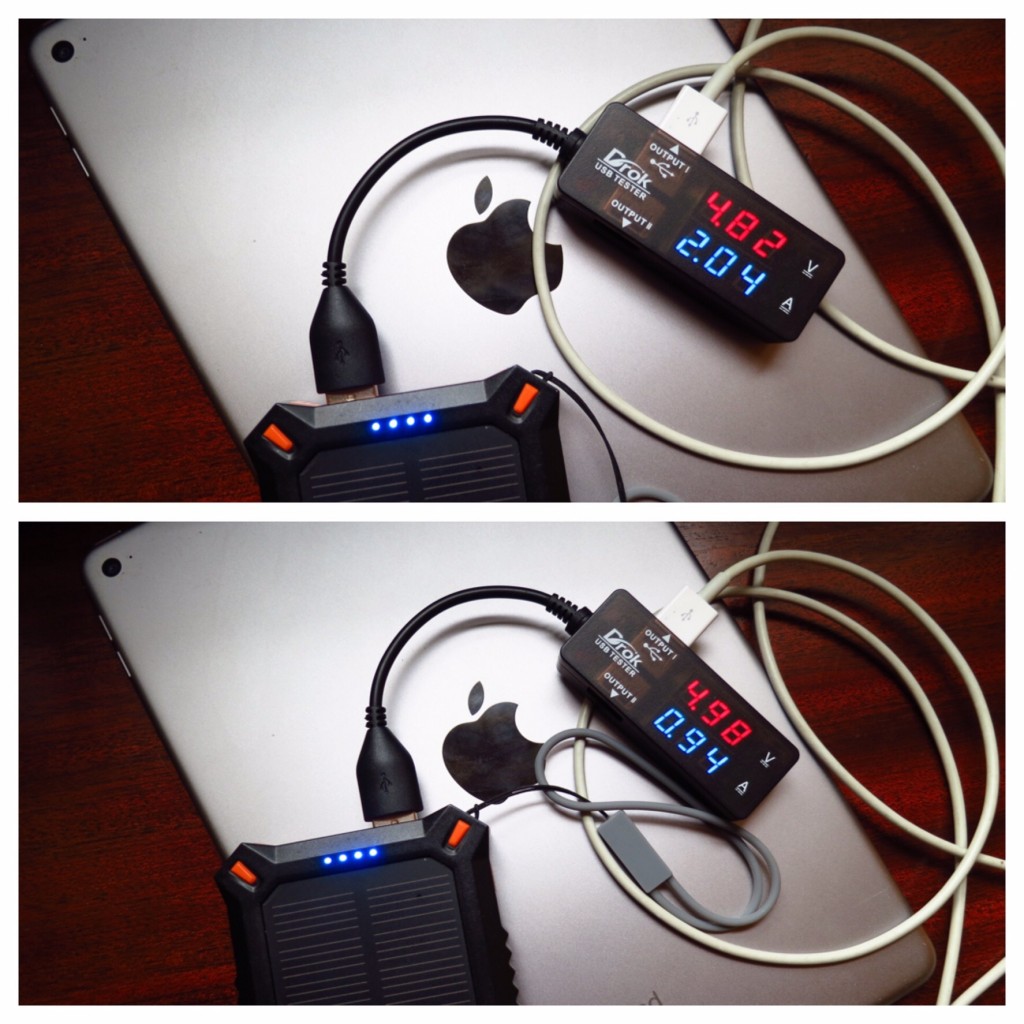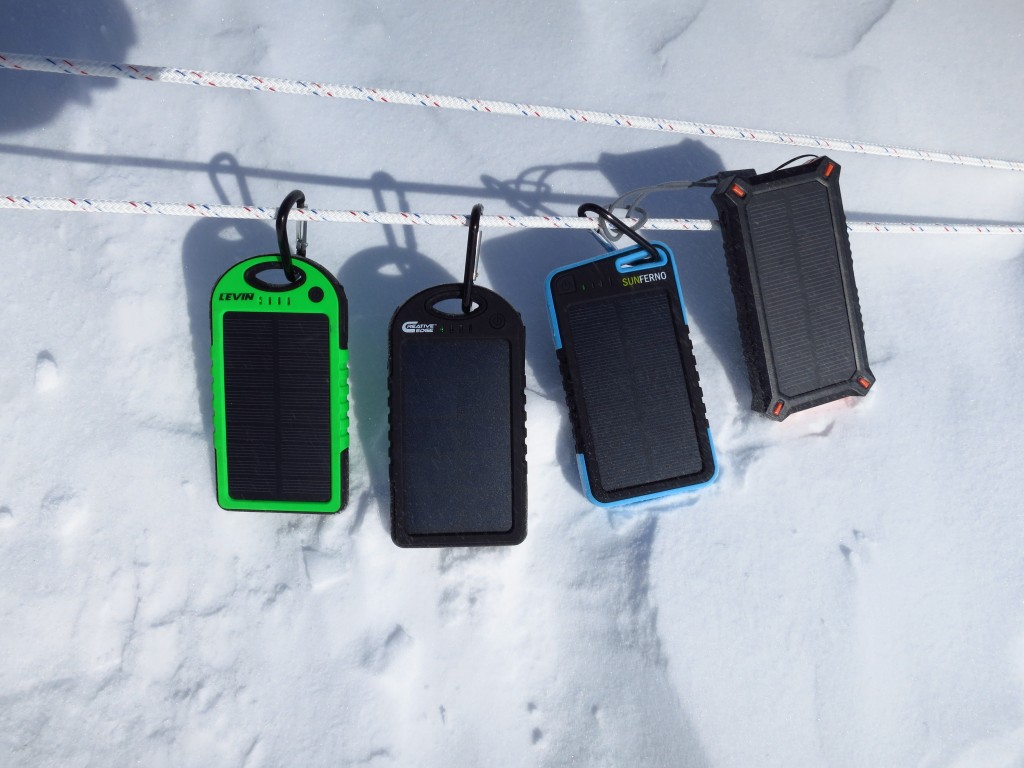Poweradd Apollo 3 Review
Our Verdict
Our Analysis and Test Results
The Apollo 3 soared high above the competition when we actually plugged into it for a charge--but it lagged far behind in the solar realm. It was a challenging device to review, but we certainly didn't dislike it, overall.
Performance Comparison
Output Power
The Apollo 3 was a tricky device to rate for output power. With integrated solar/battery chargers, such as this one, we have to consider two phases of output power: the ability of the sun to charge the battery, and the ability of that battery to charge our devices. This charger boasts a powerful and large battery, compared to the other similar devices we reviewed with integrated batteries, such as the Creative Edge Solar-5+, the Levin Dual USB Port 6000mAh Panel, and the SunFerno Flintstone. However, it also lagged behind the curve in its ability to charge that powerful battery from the sun.
The Apollo 3 was the only charger in our review which did not advertise the amperage or wattage of its solar panel online or stamped on the back of the device. When we contacted the company, their response was that they were not sure because it depends on the sunshine. We read this to mean that they just didn't want to talk about the itsy bitsy solar panel, underlining that these integrated panel/battery devices really are not meant to be relied upon for their solar-recharging abilities. Interestingly, however, the original packaging lists the solar charging specs: 5V or 150mA. This was the smallest amperage input of the solar panels in this review, and perhaps not surprising that it did not actually produce a charge from the sun.
The only advantage, therefore, of the Apollo 3 over its direct competitors (the other integrated devices), is that it charges twice as fast (at least) and ten times (or something) more reliably from the wall than any of the other batteries we tested. It would take only about three to four hours to charge up from the wall.
This is also a device that tells you exactly how much juice is left in its battery, without doubt or question (unlike the Creative Edge which never registered a full charge). And then it will charge two devices at the same time, pumping out 3 amps of current to two ports labeled for the 1 or 2 amps it puts out (with stylish lightning bolts, one for the 1 amp port and two for the 2 amp port). This means that the big (and, albeit, heavier) battery will charge up your iPhone and your iPad at the same time! With, of course, considerable loss in total battery percentage points--two-at-a-time charging will bring your two devices back from the dead, but you won't get a full charge out of either.
In general, the max we could get out of a fully charged Apollo 3 was 2-3 smartphone charges (as advertised) or 50% of an iPad charge (though they advertise one full iPad charge--we never got more than half).
Ease of Use
Though we could not realistically get a charge from the sun with the Apollo 3, it was otherwise a very user-friendly charger. This, ironically, caused it to score on par with the similar Creative Edge, Levin, and SunFerno devices, even though it didn't charge reliably (or at all) from the sun. Perhaps we got a solar-panel lemon, but the rest of the electronics of the Apollo 3 were so solid and reliable, we are surprised by the underperformance of the solar panel. In addition, last year, the Apollo 2 charged up fully from the sun (even though it took several days).
The other three integrated devices did pick up a little power from the sun in side-by-side tests, when the Apollo 3 did not. However, since most users will (or should!) be leaving the house with the integrated battery all charged up, we believe the Apollo 3 is, in our opinion, still on par. Assuming similar user habits for the integrated solar/battery devices, we believe the Apollo 3's lack of solar re-charging (or "emergency" charging) is compensated for in the much larger battery, the high amperage, and the more reliable indicator LEDs.
Weight
While still relatively lightweight in our overall review, this device is about 40% heavier than the other three similar chargers. Percentage-wise, this is a ton; however, it is really only a difference of 2 ounces. The device still scores high for its light weight, but keep in mind that the heftier battery means it's a heavier device for the size.
Versatility
Poweradd claims that the Apollo 3 will work optimally under -20 to 60 degree Celsius temperatures, so we put that to the test. We set the panel out to charge in sub-zero temperatures in Antarctica, and after a full day of charging (in the 24 hour sunlight) we saw exactly zero charge on the battery--it was just as dead as when we set it out. The Apollo 2 performed much better in similar conditions last year, charging fully in roughly 50 hours of sunlight.
Portability
This device, like the SunFerno, Creative Edge, and Levin chargers, will slip easily into a back pocket, and fit anywhere a smartphone will. The Apollo 3 in particular feels more sleek and stylish than the other three, and proved more reliable as a charger (minus the solar component), so we were more apt to tote it along in our bags or pockets. It is heavier and feels more rugged than the other three, but it does not have the soft and bouncy silicone casing of the others: it is hard plastic all around.
The Apollo 3's major Achilles Heel, however, is that it has no port covers. When we took this device along on our snowy adventures, the ports filled up with snow. Not desirable--this unfortunate design oversight detracted from its score for portability.
Best Applications
If you hang out somewhere with lots of sun and you have the opportunity to leave this charger out in full sun for a long time--and in turn, you don't need to charge often with it, then it may very well work out for you. For all others, perhaps the Apollo 2 is still a better option; otherwise, check out the other panels in this review, such as the Creative Edge Solar-5 and the SunFerno Flintstone if you're set on the style, or the Goal Zero Venture 30 kit, our overall winner. Ultimately, you might be better served by a lighter weight and less expensive external battery, since this device functions only as a battery.
Value
For our price per watt value metric to work, we have to know the official wattage of the panel. Poweradd does not advertise or disclose (even after several emails) the wattage of this panel, but it is probably in the 1-2W range. If that is the case, it would be $40-$80/watt, which is shocking except that we must factor in the value of a battery. In this case, it is only the battery that is of value (when it is charged at home), so this turns into a very expensive external battery. We sincerely hope that the Apollo 4 addresses the charging issues, because we really liked the Apollo 2!
Conclusion
The Apollo 3 raises the biggest question in the portable solar panel industry today: just where do we draw the line of compromises between solar and battery perfomance in these integrated devices? The Apollo 3 severely underperformed in the solar category, but it worked great as a battery. In the end, the Apollo 3 should be considered a great (and stylish) external battery to charge your USB devices. We hope that Poweradd will improve the panel (or use the one from the Apollo 2?) for their next iteration, and put a couple protective plugs in the USB ports. With those improvements, this would be the best of its class. For now, it is just one big (so to speak) false promise.









